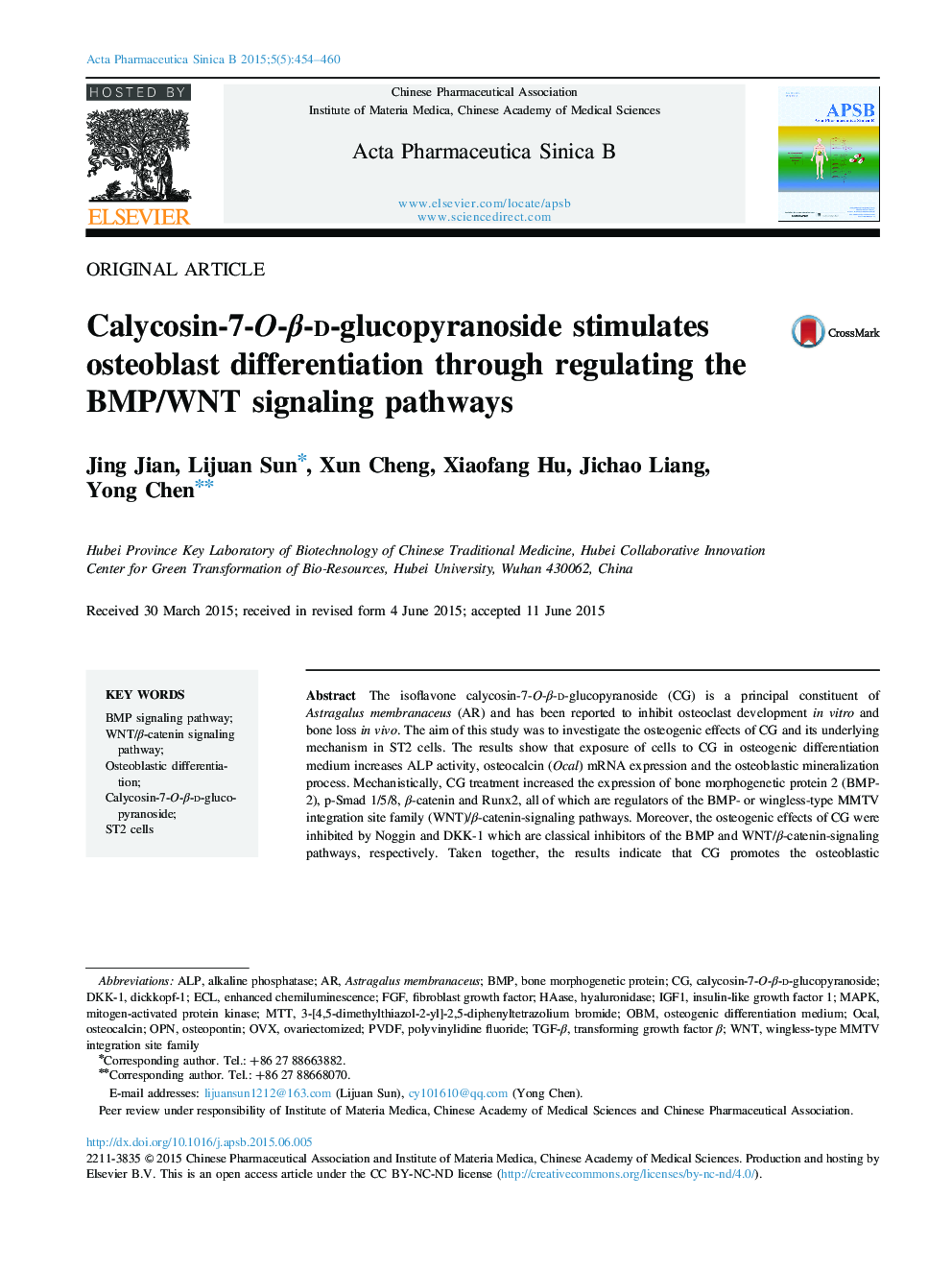| Article ID | Journal | Published Year | Pages | File Type |
|---|---|---|---|---|
| 2474623 | Acta Pharmaceutica Sinica B | 2015 | 7 Pages |
The isoflavone calycosin-7-O-β-d-glucopyranoside (CG) is a principal constituent of Astragalus membranaceus (AR) and has been reported to inhibit osteoclast development in vitro and bone loss in vivo. The aim of this study was to investigate the osteogenic effects of CG and its underlying mechanism in ST2 cells. The results show that exposure of cells to CG in osteogenic differentiation medium increases ALP activity, osteocalcin (Ocal) mRNA expression and the osteoblastic mineralization process. Mechanistically, CG treatment increased the expression of bone morphogenetic protein 2 (BMP-2), p-Smad 1/5/8, β-catenin and Runx2, all of which are regulators of the BMP- or wingless-type MMTV integration site family (WNT)/β-catenin-signaling pathways. Moreover, the osteogenic effects of CG were inhibited by Noggin and DKK-1 which are classical inhibitors of the BMP and WNT/β-catenin-signaling pathways, respectively. Taken together, the results indicate that CG promotes the osteoblastic differentiation of ST2 cells through regulating the BMP/WNT signaling pathways. On this basis, CG may be a useful lead compound for improving the treatment of bone-decreasing diseases and enhancing bone regeneration.
Graphical abstractThe results indicate that calycosin-7-O-β-d-glucopyranoside (CG) promotes the osteoblastic differentiation of ST2 cells through regulating the BMP/WNT signaling pathways. On this basis, CG may be a useful lead compound for improving the treatment of bone-decreasing diseases and enhancing bone regeneration.Figure optionsDownload full-size imageDownload as PowerPoint slide
